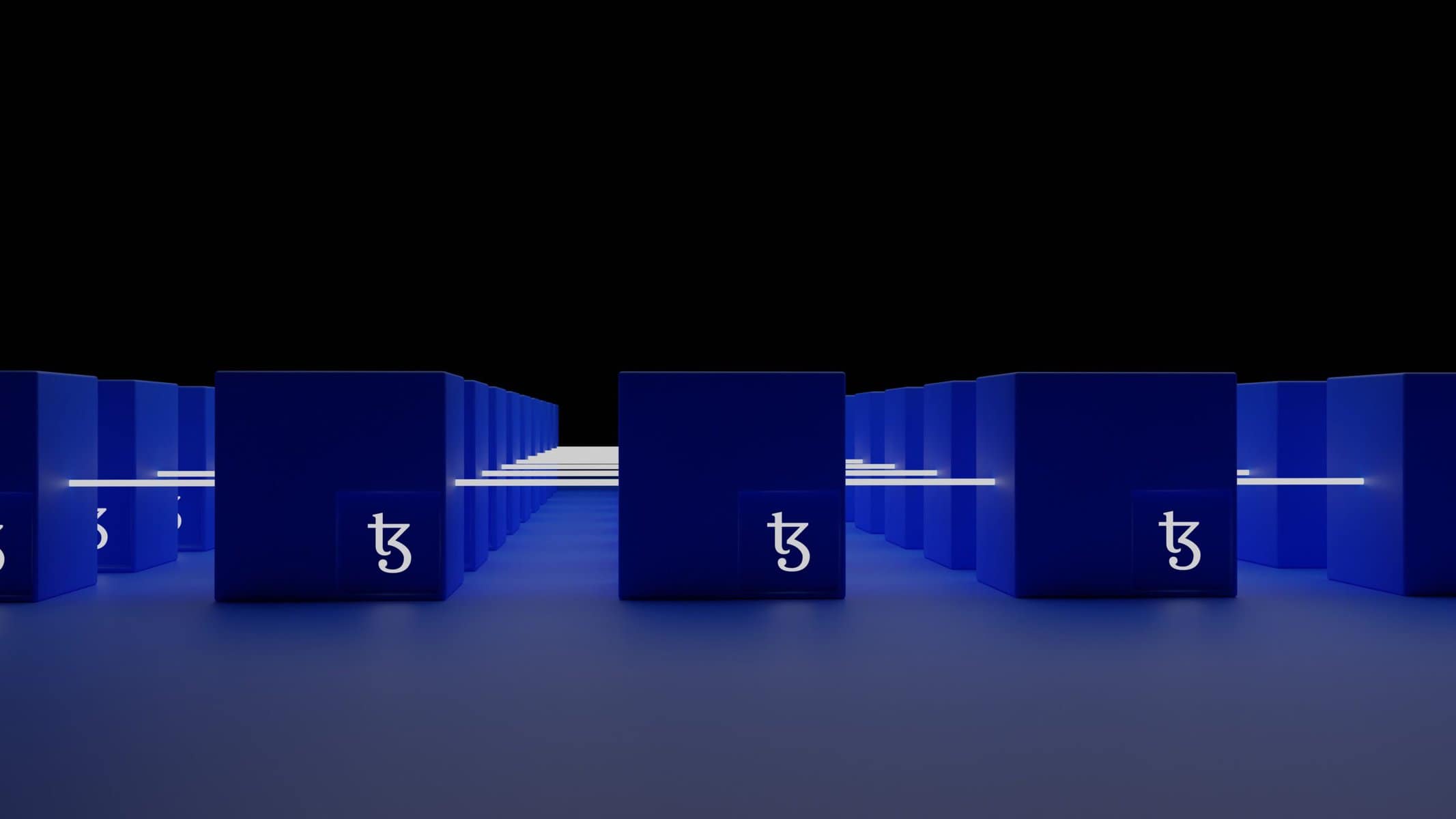You’re about to discover Stacks (STX), a revolutionary cryptocurrency and blockchain ecosystem that is set to transform the way we interact with the internet. With Stacks, you can take control of your data, enhance your privacy, and empower yourself to truly own your digital assets. This innovative platform enables a seamless integration of smart contracts on Bitcoin, making it a truly unique and powerful tool. Open up a world of possibilities with Stacks (STX) and experience a decentralized future like never before.

What are Stacks?
Stacks is a blockchain ecosystem that aims to bring the power of smart contracts and decentralized applications (dApps) to Bitcoin, the world’s first and most secure cryptocurrency. With Stacks, developers can build applications on top of Bitcoin’s security, immutability, and proven track record. Stacks achieves this by connecting to Bitcoin through a unique consensus mechanism called Proof of Transfer (PoX). In this article, we will explore the different aspects of Stacks, including its token, blockchain, virtual machine, benefits, use cases, utility, development community, challenges, and future outlook.
Introduction to Stacks
Stacks is not just another blockchain platform; it is a platform that enhances the capabilities of Bitcoin by enabling smart contracts and decentralized applications. While Bitcoin revolutionized the concept of digital currency, it lacks the programmability of other blockchain platforms like Ethereum. Stacks bridges the gap by providing a scalable and secure way to build on top of Bitcoin, opening up endless possibilities for innovation.
The Stacks Token (STX)
The native cryptocurrency of the Stacks blockchain is called the Stacks token, or STX for short. STX serves multiple purposes within the Stacks ecosystem, including governance, stacking and yielding, transaction fees, and token distribution. STX holders have the opportunity to participate in the governance of the network by voting on proposed improvements and changes. Additionally, STX can be staked to earn Bitcoin rewards through the stacking mechanism, providing holders with a way to generate passive income.
The Stacks Blockchain
The Stacks blockchain is the infrastructure that powers the Stacks ecosystem. It is designed for scalability, enabling high-throughput transaction processing while maintaining the security and immutability of Bitcoin. The Stacks blockchain connects to Bitcoin through the PoX consensus mechanism, which we will explore in more detail later. By leveraging Bitcoin’s established network, Stacks inherits its robust security features and benefits from the extensive network of Bitcoin miners.

The Stacks Virtual Machine (VM)
To execute smart contracts and run decentralized applications, Stacks utilizes its own virtual machine called the Stacks Virtual Machine (VM). The Stacks VM is designed to be compatible with the Ethereum Virtual Machine (EVM), allowing developers to port their existing Ethereum dApps to Stacks without extensive modifications. This compatibility provides developers with an easy on-ramp to leverage the security and advantages of the Stacks ecosystem without the need to recreate their applications from scratch.
How Stacks Work
Proof of Transfer (PoX)
Proof of Transfer (PoX) is a consensus mechanism unique to Stacks that enables the connection between the Stacks blockchain and Bitcoin. Unlike traditional consensus mechanisms that rely on computational power or stake-based voting, PoX introduces a new approach. In PoX, miners on the Stacks blockchain must commit Bitcoin to the Bitcoin blockchain as proof of work. This commitment provides security to the Stacks blockchain, aligning its incentives with Bitcoin’s security model.
Smart Contracts on Stacks
Smart contracts are self-executing contracts with the terms and conditions written directly into code. With Stacks, developers can write smart contracts using popular programming languages like Clarity, a language specifically designed for secure smart contract development. These smart contracts can then be deployed and executed on the Stacks blockchain, benefiting from Bitcoin’s security while enjoying the flexibility and programmability of smart contracts.
Smart Contract Execution
When a smart contract is deployed on the Stacks blockchain, it becomes part of its immutable history. Every participant in the network can interact with the contract and execute its functions as intended. The decentralized nature of the Stacks blockchain ensures that smart contracts operate autonomously, without the need for intermediaries. This transparency and reliability are essential for decentralized applications and enable a wide range of use cases across industries.
Stacks 2.0
Stacks 2.0 is a significant upgrade to the Stacks blockchain that introduces substantial improvements in scalability, efficiency, and functionality. With Stacks 2.0, the system will be able to handle higher transaction volumes, making it more suitable for mainstream adoption. Additionally, Stacks 2.0 enables more complex smart contracts, advanced privacy features, and enhanced interoperability with other blockchains. This upgrade paves the way for broader use cases and expands the possibilities for developers and users alike.

Benefits of Stacks
Decentralization and Security
One of the core benefits of Stacks is its association with Bitcoin’s security. By connecting to the Bitcoin blockchain through PoX, Stacks inherits the robustness and immutability of the world’s most secure cryptocurrency. This ensures that applications and smart contracts built on Stacks can benefit from the highest level of security without compromising decentralization.
Compatibility with Bitcoin
Stacks brings the power of smart contracts and dApps to Bitcoin without altering the underlying Bitcoin blockchain. This compatibility allows developers and users to leverage the security and established network effects of Bitcoin while enjoying the programmability and flexibility of smart contracts. By building on Stacks, developers can tap into a vast user base and create innovative solutions within a trusted and battle-tested ecosystem.
Scalability and Lower Fees
Stacks is designed to be scalable, offering high throughput and low transaction fees. With the introduction of Stacks 2.0, the network can handle increased transaction volumes, making it more efficient and suitable for large-scale applications. Additionally, by using Bitcoin’s PoX consensus mechanism instead of Proof of Work (PoW), Stacks reduces the energy consumption associated with mining, resulting in lower fees and a more sustainable blockchain network.
Ecosystem Expansion
As Stacks gains traction and attracts developers and users to its ecosystem, the opportunities for collaboration and innovation increase. The Stacks ecosystem encourages the development of decentralized finance (DeFi) applications, tokenized assets, dApps, and more. With a vibrant and growing ecosystem, Stacks opens up countless possibilities for individuals, businesses, and organizations to build and innovate on top of the Bitcoin blockchain.
Stacks Use Cases
Decentralized Finance (DeFi)
The Stacks ecosystem provides a perfect foundation for decentralized finance applications. With smart contracts on Stacks, developers can create decentralized lending and borrowing platforms, decentralized exchanges, stablecoins, and other financial instruments. By leveraging Bitcoin’s security and the programmability of smart contracts, DeFi applications on Stacks can offer users a more secure and transparent alternative to traditional financial services.
Decentralized Apps (dApps)
Stacks enables developers to build decentralized applications that operate within a trustless and transparent environment. These dApps can serve various purposes, such as social networks, gaming platforms, marketplaces, voting systems, and more. With Stacks, dApps can benefit from Bitcoin’s security and the ability to interact with the vast Bitcoin user base, ensuring a wider reach and potential user adoption.
Tokenized Assets
Stacks allows for the tokenization of real-world assets, bringing the benefits of blockchain technology to traditional markets. By representing assets such as real estate, commodities, intellectual property, or even artwork on the Stacks blockchain, ownership can be easily transferred and tracked. This tokenization process enhances liquidity, reduces friction, and opens up new investment opportunities previously inaccessible to a broader audience.
Identity and Authentication
Stacks provides a decentralized and secure framework for identity and authentication solutions. By leveraging the immutability of the blockchain, users can have greater control over their digital identities, reducing the risk of identity theft and unauthorized access. Stacks-based identity systems can enable secure login systems, data privacy, and seamless integration with various services and platforms.

Stacks Token (STX) Utility
Governance and Voting
As the native cryptocurrency of the Stacks blockchain, STX holders have the right to participate in the governance of the network. STX holders can vote on proposed improvements, changes, and policies through a decentralized governance system. This ensures that the Stacks ecosystem remains aligned with the interests and values of its community.
Stacking and Yielding
STX holders can participate in a process called stacking to support the security and consensus of the Stacks blockchain. By locking up a certain amount of STX, holders can earn BTC rewards through stacking. This mechanism incentivizes long-term holding and active participation in the network while providing STX holders with an opportunity to generate passive income.
Transaction Fees
STX is also used to pay for transaction fees within the Stacks ecosystem. Whether it’s executing a smart contract or transferring tokens, users are required to pay a small amount of STX as a fee. This ensures that the network remains secure and discourages spam or malicious activities.
Token Distribution and Economics
The distribution of STX tokens follows a fair and decentralized model. Tokens were initially distributed through a public sale and have been gradually released into circulation through various mechanisms, including mining and stacking rewards. This approach ensures a broad and widespread distribution of tokens, promoting a healthy and decentralized ecosystem.
Stacks Development and Community
Open Source Development
Stacks is built on open-source principles, allowing developers to contribute to the improvement and enhancement of the ecosystem. The Stacks blockchain and associated tools are available on platforms like GitHub, providing a collaborative environment for developers worldwide. This open-source nature fosters innovation, transparency, and community engagement.
Stacks Community
The Stacks community is a diverse group of individuals, developers, and enthusiasts who are passionate about the blockchain’s potential. The community actively participates in shaping the future of Stacks through discussions, proposals, and contributions. The Stacks ecosystem benefits from this engaged and vibrant community, which drives innovation and adoption.
Stacks Improvement Proposals (SIPs)
Similar to other blockchain ecosystems, Stacks has an official process for proposing and implementing improvements and changes. Stacks Improvement Proposals (SIPs) allow community members to submit proposals for consideration. These proposals are assessed, discussed, and voted on by the community, ensuring a decentralized decision-making process.
Developer Tools and Resources
To empower developers to create on the Stacks blockchain, a range of tools and resources are available. These include software development kits (SDKs), libraries, documentation, forums, and tutorials. These resources aim to simplify the development process, provide technical support, and foster a robust ecosystem of applications and services.

Key Challenges for Stacks
Scalability and Network Throughput
As with any blockchain platform, scalability is a key challenge for Stacks. As the ecosystem grows and more applications are built on top of the Stacks blockchain, the network must be able to handle increased transaction volumes without sacrificing security or efficiency. Stacks 2.0 aims to address these challenges by introducing enhanced scalability features.
Regulatory Considerations
The blockchain space operates in a rapidly evolving regulatory landscape. Stacks and its ecosystem must navigate the legal and regulatory frameworks of various jurisdictions to ensure compliance while promoting innovation. Engaging in constructive dialogue with regulators, policymakers, and other stakeholders is crucial to foster a supportive regulatory environment.
Competition and Market Adoption
The blockchain industry is highly competitive, with numerous platforms vying for adoption and market share. Stacks faces competition from established platforms like Ethereum as well as newer entrants in the space. To stand out and gain widespread adoption, Stacks must showcase its unique value proposition and attract developers, businesses, and users to its ecosystem.
Security and Auditing
As blockchain technology becomes more prevalent, security and auditing become critical factors. Stacks must ensure the highest level of security throughout its ecosystem, including smart contracts, dApps, and user wallets. Regular security audits and robust testing processes are necessary to identify and address potential vulnerabilities, safeguarding the network and user assets.
Future Outlook for Stacks
Stacks 2.0 and Beyond
With the upcoming launch of Stacks 2.0, the future looks promising for the Stacks ecosystem. Stacks 2.0 brings significant upgrades and improvements that address scalability, advanced smart contract functionality, enhanced privacy features, and interoperability. These developments position Stacks for broader adoption and unlock new possibilities for developers and users.
Ecosystem Growth and Adoption
As the Stacks ecosystem continues to grow, attract developers, and onboard users, its potential impact expands. The development of innovative applications, the tokenization of assets, and the emergence of new use cases further solidify Stacks as a platform for decentralized innovation. Continued ecosystem growth will be a key driver of adoption and mainstream recognition.
Interoperability with Other Blockchains
The ability for blockchains to communicate and exchange information is critical for the overall growth and success of the industry. Stacks acknowledges this importance and aims to enhance interoperability with other blockchain platforms. By facilitating seamless integration and data interoperability, Stacks can leverage the strengths of other blockchains while maintaining its unique value proposition.
Mainstream Integration
For blockchain technology to reach its full potential, it must seamlessly integrate into mainstream applications and services. Stacks aims to bridge the gap between traditional systems and blockchain innovation by providing a user-friendly development environment and leveraging the familiarity and security of Bitcoin. This mainstream integration will be crucial for broad adoption and the realization of Stacks’ vision.
Conclusion
In conclusion, Stacks presents a unique and innovative approach to bridging the gap between Bitcoin and smart contracts. By leveraging the security and proven track record of Bitcoin, Stacks provides a secure and scalable ecosystem for developers to build decentralized applications and implement smart contracts. With its native token, STX, and its robust governance model, Stacks empowers the community to shape the future of the ecosystem. While Stacks faces challenges in scalability, competition, and regulatory considerations, its future outlook remains promising with the upcoming release of Stacks 2.0 and opportunities for ecosystem growth and mainstream integration. As the Stacks ecosystem continues to grow, it has the potential to revolutionize various industries, drive innovation, and create new opportunities for individuals and businesses alike.

